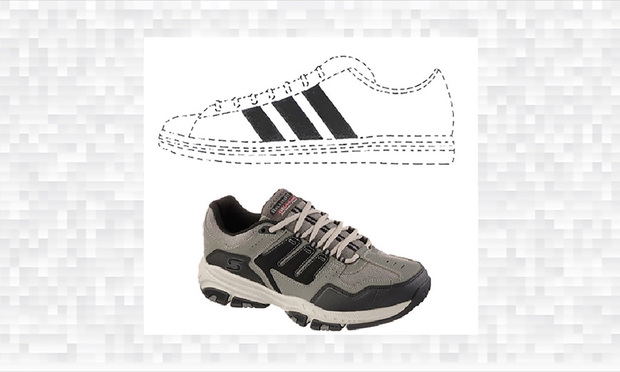Milton Springut

February 08, 2019 | New York Law Journal
'Avvo' Raises Important Questions About Opinion-Fact Dichotomy in False Advertising CasesIn 'Davis v. Avvo', the SDNY dismissed a false advertising claim, on the pleadings, brought by a New York attorney, holding that Avvo's ratings are non-actionable “opinion.” A review of Davis' complaint indicates that the matter may not be so simple.
By Milton Springut
9 minute read

October 29, 2018 | New York Law Journal
Exploiting Both Patents and Trade Secrets to Protect TechnologyWhen a patent application is published after 18 months, its contents become public knowledge and are no longer protected as trade secrets. Nevertheless, the 'TAOS' case shows that businesses can still exploit both forms of protection, if the nuances and limitations of each form of intellectual property are appreciated.
By Milton Springut
9 minute read

June 05, 2018 | New York Law Journal
'Adidas' Case Informs Importance of Building a Strong Case of Irreparable Harm in Trademark CasesIn his Intellectual Property column, Milton Springut looks at the Ninth Circuit's recent decision in 'Adidas America v. Skechers USA.'
By Milton Springut
3 minute read

January 31, 2018 | New York Law Journal
Court Extends Non-Compete Law to IP Licensing AgreementsMilton Springut discusses "Crye Precision v. Duro Textiles," a recent Second Circuit decision which extends the common-law restrictions on non-compete provisions to a new area: intellectual property licenses.
By Milton Springut
9 minute read

October 17, 2017 | New York Law Journal
Decisions Highlight Need to Rethink IP Protection Strategies for Product DesignsMilton Springut discusses two recent decisions which will require that strategies for protecting decorative designs incorporated into useful articles be rethought.
By Milton Springut
12 minute read

April 19, 2017 | New York Law Journal
Fastener Case Gives SCOTUS Opportunity to Resolve Trademark Remedies IssueMilton Springut discusses a recent Connecticut case that presents the U.S. Supreme Court with an opportunity to resolve a longstanding dispute in trademark law: whether a prevailing trademark plaintiff must show willfulness to obtain disgorgement of the infringer's profits. This issue has split federal courts for decades.
By Milton Springut
16 minute read

March 27, 2017 | New York Law Journal
Federal Circuit Decision Highlights Traps in Provisional Application PracticeMilton Springut of Springut Law PC analyzes a recent Federal Circuit decision—'MPHJ Technology Investment v. Ricoh Americas'—which highlights some of the traps that can arise with provisional patent applications. He discusses the legal requirements of provisional practice, the implications of this new case, and best practices for such applications.
By Milton Springut
15 minute read

December 12, 2016 | New York Law Journal
Second Circuit Strengthens Grey Goods Enforcement LawMilton Springut, of Springut Law, discusses a Second Circuit decision that sheds light on several issues involving grey goods—genuine goods that are intended for sale abroad, which the manufacturer has never authorized for domestic sale. The court recently summarily affirmed a preliminary injunction order in 'Abbott Laboratories v. H&H Wholesale Services' involving importation of diabetes test strips designed for sale internationally.
By Milton Springut
15 minute read

September 13, 2016 | New York Law Journal
Thanks but No Thanks: 'Citigroup' and Lessons on Trademark LitigationMilton Springut shares insights on important lessons about litigating trademark cases in a district court's decision last month denying a preliminary injunction sought by Citigroup to protect its trademark THANKYOU, used in its loyalty, redemption and rewards programs in a dispute over AT&T's use of the name AT&T THANKS marketing a similar rewards program.
By Milton Springut
19 minute read

August 02, 2016 | New York Law Journal
Analyzing Potential Conflicts in Patent ProsecutionMilton Springut writes: Representing two clients with competing technologies is a position "fraught with possible conflict of interest" and this perilous situation can continue even after one representation is completed. Two analytic frameworks can aid patent practitioners in determining whether there is a conflict.
By Milton Springut
30 minute read
Trending Stories
- 1Judge Denies Sean Combs Third Bail Bid, Citing Community Safety
- 2Republican FTC Commissioner: 'The Time for Rulemaking by the Biden-Harris FTC Is Over'
- 3NY Appellate Panel Cites Student's Disciplinary History While Sending Negligence Claim Against School District to Trial
- 4A Meta DIG and Its Nvidia Implications
- 5Deception or Coercion? California Supreme Court Grants Review in Jailhouse Confession Case
More from ALM
- Legal Speak at General Counsel Conference East 2024: Match Group's Katie Dugan & Herrick's Carol Goodman 1 minute read
- Legal Speak at General Counsel Conference East 2024: Eric Wall, Executive VP, Syllo 1 minute read
- Legal Speak at General Counsel Conference East 2024: Virginia Griffith, Director of Business Development at OutsideGC 1 minute read



